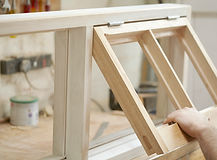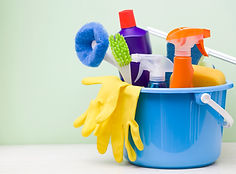VIDEO LINKS:
How Do I Safely Remove My Personal Items While My Remediation is Pending?
Water Damage & Mold Prevention Tips
WATER LEAK ALERT TOOLS
Florida Mold Statute: Know B4 You Go
Let’s Review Your Mold Assessment Report (version favorite)
Buyer Beware of Coverups
Hurricane Water Damage Tips
Why Your Contractor (in many instances) SHOULD NOT PERFORM
YOUR MOLD REMEDIATION
Mold Shysters are EVERYWHERE
AN UNNECESSARY LARGE MOLD REMEDIATION EXPENSE
MOLD REMEDIATOR PROTOCOL OVERVIEW
HOUSE FLIPPERS AND DIY
MOLD or MILDEW;
HARMFUL OR NOT?
BE INFORMED BEFORE HIRING YOUR MOLD ASSESSOR (ALSO CALLING THEMSELVES "INSPECTORS") Especially for "Free" Because It's N E V E R free
Let's PREVENT Water Damage
KITCHEN SINK BASE - COMMON PROBLEMS
You Tube Channel Link: https://www.youtube.com/

Welcome to My Website
Proudly Serving Tallahassee, North Florida and South Georgia Since 1992
WE
CARE
Plain
and
Simple

Cindy Ericks, Founder &
President
Ericks
Environmental
Consulting
We Care
INDOOR AIR QUALITY
How Do I Prevent Indoor Mold?
Prevent indoor (common) mold growth by controlling and managing indoor humidity as well as moisture intrusion of the building envelope, HVAC systems, plumbing and other water damage producers. North Florida weather, even when mild temperatures exist, is usually very humid and can create serious and expensive common mold growth problems.
How Do I Control the Humidity Indoors?
In order to know how to control the humidity inside you first need some basic knowledge about indoor air in North Florida.
-
A properly sized and properly functioning HVAC system is designed to remove humidity from the indoor air during warm weather.
-
Most window air units and P-TAC units do not adequately/effectively remove humidity from indoor air.
-
When outside temperatures drop below 80°F most HVAC systems do not stay on long enough to remove the humidity from the indoor air when the outside humidity is >60% regardless of the setting.
-
Heat function will not lower indoor humidity adequately in most circumstances.
-
Monitoring the indoor humidity and always maintaining <55% at the thermostat should prevent mold growth provided no other moisture sources are present.
-
Always keep “fan” function on “Auto” as this can cause very high humidity.
-
Common outdoor molds proliferate growth when humidity is 60% and above for extended periods.
Other Influences on Humidity in the Indoor Environment that can be Better Managed:
-
Cooking. Steam created in the kitchen (with or without ventilation to the exterior) can contribute to increased humidity.
-
Showering and bathing.
-
Fish tanks.
-
Plumbing leaks.
-
Roof leaks.
-
HVAC system problems and improper new installations-FREQUENTLY.
-
The use of humidifiers for respiratory illness and breathing problems.
Call for a Consult and we will tailor recommendations to your circumstances and needs.
Tips to Keep Humidity Low:
-
Purchase good quality digital humidity gauges (Acurite Brand is excellent and available at Walmart, Home Depot and Lowes). Place gauges at each thermostat and in farther reaching areas of the building.
-
Track humidity indoors and outdoors; implement dehumidifier when needed.
-
Bring in clean, fresh outside air regularly while monitoring and controlling humidity.
-
Purchase one or more dehumidifiers with digital settings, high tank capacity and high 24 hour capacity to remove water from air equipped with a ¾” garden hose connection for continual drain.
-
Use dehumidifiers ALL the time; set on 40% (This would allow you to bring in fresh air regularly that is humid and still maintain safe humidity levels indoors). Check regularly for continuous drain and empty twice daily (minimum) when using holding tank option.
Every building is different and solutions can be tailored to your specific needs and occupancy loads/activities. Call us to schedule a consult.



Indoor Air Quality Must-Haves
-
Humidity Gauges
-
Free-Standing Dehumidifier(s) or Built-in System Dehumidifier(s)
-
Control of Indoor Environment
-
Fresh clean outside air
-
Chemical FREE or near chemical free cleaning (YES! IT IS POSSIBLE! Ask us how.
-
typeof a=="string"?Ge(a):go(a)>CALL CINDY TODAY TO LEARN HOW TO GREATLY REDUCE TOXIC EXPOSURES
-
typeof a=="string"?Ge(a):go(a)>(THAT LEAD TO DISEASE) IN YOUR HOME OR WORKPLACE.
Check Out My Blogs For More On Humidity or Download This Humidity Fact Sheet.
Whats Are VOCs?
The functions of living creates this thing called typeof a=="string"?Ge(a):go(a)>volatile organic compounds (VOCs) to be released in the air we breathe every day in our homes, offices, stores-nearly every place we visit indoors and sometimes outdoors. Some outdoor examples that may come easily to mind are: exhaust for vehicles, exhaust from ventilation in buildings from combustion processes, sewer gases, manufacturing plants, dry-cleaning facilities, etc.
But what are examples of Indoor VOC's? The list is far too long to mention everything, but, some of these items include: building materials, furnishings, soaps, shampoos, dish washing liquid, laundry detergent, hairspray, deodorant, hair gel, cooking, bathing, living, living with pets, containers, luggage, clothing, packaging,fumes, soot, perfumes, air fresheners, computers, televisions, radios, telephones, smartphones……creating a toxic soup that we breathe daily if we are not implementing good and safe practices.
How Do I Know if My Indoor Air Quality is Poor?
If you are reading this your indoor air quality is probably poor. Our goal is to help you understand some of the possible risks associated with breathing poor quality indoor air and helping you to understand ways that you can reduce your exposure. To best understand this, you need to understand how your house interacts with itself. The systems within the house and outdoor conditions will impact the resulting air quality in any building or house.
We help you identify and focus specifically on your individual concerns and how it relates to a specific building. While we will test for chemicals, we believe it’s more important to reduce your exposure with knowledge. If you’d like to test after you implemented some of our suggestions then you may. We also realize that some customers need testing because they are trying to identify something specific that may be causing harm or discomfort and we will be glad to help you find solutions for that type of problem as well.



